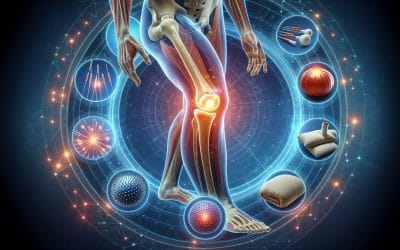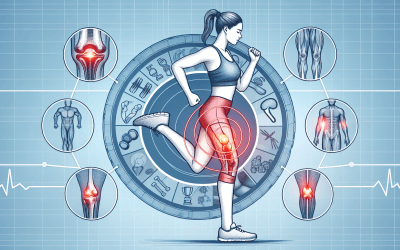Discover the significance of a comprehensive treatment plan for knee pain at Eastside Ideal Health. Find effective solutions for long-lasting relief and improved mobility today!
Regain Strength, Stability, and Confidence
Knee Pain Treatment in Redmond, WA
Start Healing and Moving with Freedom and Strength
Locations in Redmond & Issaquah
Restore Mobility, Reduce Inflammation
Knee pain can disrupt your movement, training, or even your daily routine. Whether it’s caused by a recent injury or has developed over time, our team at Eastside Ideal Health provides personalized chiropractic and rehab-based care to help you move pain-free—without injections or surgery.
Common Causes of Knee Pain
The knee is a complex joint influenced by the hips, ankles, and even your spine. Some of the most common conditions we treat include:
- Patellofemoral pain syndrome (runner’s knee)
- Meniscus irritation or early degeneration
- Osteoarthritis and joint space narrowing
- IT band syndrome and lateral tracking
- Tendonitis (patellar or quadriceps)
- Post-surgical stiffness or pain
Signs You Should Seek Treatment
- Knee stiffness or locking after sitting or exercise
- Pain climbing stairs or rising from a seated position
- Popping, clicking, or grinding in the joint
- Instability or sensation of “giving out”
- Swelling or soreness after activity
Our Diagnostic Approach
We begin with a thorough biomechanical assessment to identify the root cause of your knee dysfunction. This includes:
- Functional movement testing (squats, lunges, single-leg control)
- Orthopedic and neurological evaluations
- Palpation and joint mobility testing
- Referral for imaging when necessary
Chiropractic & Rehab Treatments for Knee Pain
We take a full-body approach to knee pain—addressing alignment, soft tissue restrictions, and muscular imbalances. Your personalized treatment plan may include:
- Knee and extremity adjustments to improve joint tracking and movement
- Soft tissue therapy (myofascial release, trigger point work)
- Kinesiology taping for pain relief and proprioceptive support
- Rehabilitation exercises to strengthen glutes, quads, hamstrings, and calves
- Mobility drills for hips and ankles to offload the knee
- Modalities like laser therapy or heat/ice to reduce inflammation
Evidence-Based Recovery
"Manual therapy and exercise are highly effective in managing knee osteoarthritis and patellofemoral pain, especially when targeted at the hip and knee simultaneously."
When to Consider Medical Referral
In most cases, conservative care is highly effective. However, we refer patients to an orthopedic specialist if you experience:
- Severe instability or suspected ligament tear
- Persistent swelling and pain despite treatment
- Signs of infection or systemic joint inflammation
Frequently Asked Questions
- Can chiropractic care help knee arthritis?
- Yes. We often help patients with mild to moderate arthritis manage pain, improve mobility, and delay the need for injections or surgery.
- Is knee cracking or popping a problem?
- Not always. If it's not accompanied by pain or swelling, it may be normal. We'll assess whether it's mechanical or symptomatic.
- Do I need to stop exercising?
- Usually not. We’ll help you modify your movements and build a safe return-to-activity plan based on your goals.
Reclaim Confident, Pain-Free Movement
Whether you're an athlete, weekend hiker, or just want to walk without pain, we’re here to help. Schedule your knee evaluation at Eastside Ideal Health in Redmond today.
Related Services:
“
Testimonials
Relieve Knee Pain Without Injections or Surgery
Chiropractic care offers non-invasive solutions to reduce pain, swelling, and stiffness in the knee joint.
Targeted Therapy for Lasting Results
We address the underlying cause of knee pain through joint mobilization, muscle balance, and functional movement work.
Support for Active, Pain-Free Living
Whether you're an athlete or just staying active, our treatments help restore mobility and prevent future flare-ups.
Learn More About Knee Pain Treatment
Knee Pain Treatment Resources
How to Manage Symptoms with Knee Pain
Discover effective ways to manage symptoms and find relief from knee pain at Eastside Ideal Health. Get expert assistance for a healthier, pain-free life. Improve your mobility today.
The Benefits of Chiropractic Care for Knee and Spinal Stenosis
Discover the advantages of chiropractic care for knee and spinal stenosis at Eastside Ideal Health. Improve your well-being with effective treatment options. Visit us today.
How to Manage Physical Activity with Knee Pain
Discover effective tips to manage physical activity while dealing with knee pain at Eastside Ideal Health. Find out how to keep active for a healthier lifestyle. Visit now!
How to Use Core Strengthening Exercises to Support Knee Health
Discover effective core strengthening exercises to promote knee health. Eastside Ideal Health guides you on improving your well-being. Discover it now!
The Importance of Rest and Recovery for Knee Pain Treatment
Discover how rest and recovery play a vital role in knee pain treatment. Explore effective techniques at Eastside Ideal Health for better healing.
Contact Us For An Appointment
Get Relief
Clinic Hours
Monday-Friday: 730am - 6pm
Saturday: 9am - 12pm
Sunday: Closed






